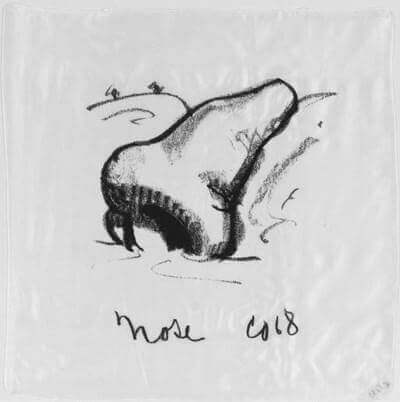Oldenburg Claes
Claes Oldenburg, born in 1929 in Stockholm, has left an indelible mark on the world of art through his innovative contributions to Pop Art and Performance. With a background steeped in international culture and education, Oldenburg’s unique perspective was shaped by his childhood in Sweden, Norway, and the United States. The family eventually settled in Chicago in 1936, where he would later sharpen his artistic talents.
Oldenburg’s academic pursuit of literature and art history at Yale University from 1946 to 1950 laid the groundwork for his artistic endeavors. Further honing his skills, he studied under Paul Wieghardt at the Art Institute of Chicago from 1950 to 1954. His early career saw him juggling roles as an apprentice reporter and a studio artist, creating magazine illustrations and easel paintings, alongside his formal training. In December 1953, Oldenburg became an American citizen, further cementing his ties to the vibrant American art scene.
The pivotal move to New York in 1956 introduced Oldenburg to a burgeoning community of artists involved in Performance art, such as George Brecht, Allan Kaprow, George Segal, and Robert Whitman. This period marked his ascent as a leading figure in Happenings and Performance art during the late 1950s and early 1960s. His enigmatic works, which included drawings, collages, and papier-mâché creations, were first exhibited in 1959 at the Judson Gallery, showcasing his innovative vision that ranged from monstrous human figures to everyday objects.
In 1961, Oldenburg’s creation of The Store in his studio—a recreation of neighborhood shops filled with plaster objects—reflected American consumer culture and marked his emergence as a Pop artist. The early 1960s saw Oldenburg cementing his reputation within the Pop Art movement, capturing the zeitgeist with his bold commentary on consumption and ordinary life.
Oldenburg’s foray into large-scale public monuments began in 1967 with Placid Civic Monument, a conceptual performance behind the Metropolitan Museum of Art. His visionary approach to art saw him propose colossal projects, such as Lipstick (Ascending) on Caterpillar Tracks, installed at Yale University in 1969. Many of these iconic works were realized in collaboration with Coosje van Bruggen, his partner both in life and art, whom he married in 1977.
The partnership with Van Bruggen and collaborations with architect Frank Gehry in the mid-1970s and 1990s further blurred the lines between sculpture and architecture. Their binocular-shaped sculpture-building for Gehry’s Chiat/Day building in Los Angeles stands as a testament to this groundbreaking fusion.
Over the years, Oldenburg’s work has been celebrated in numerous exhibitions and performances worldwide. Among his notable achievements are the solo exhibition at the Museum of Modern Art in New York in 1969 and a major retrospective organized by the National Gallery of Art and the Solomon R. Guggenheim Museum in 1995. His innovative Knife Ship I, showcased during Il Corso del Coltello in Venice in 1985, exemplified his ability to meld art, architecture, and theater into a singular experience.
Claes Oldenburg’s enduring influence is evident not only in his extensive body of work but also in the way he challenged artistic conventions. Today, he continues to live and create in New York, California, and a chateau in the Loire Valley, France, leaving a legacy that inspires artists and thinkers around the globe.
Nose Handkerchief, 1968
